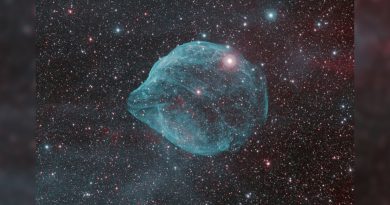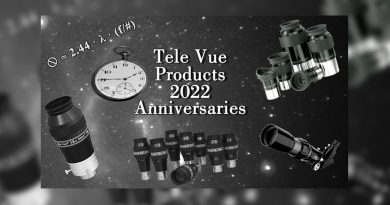2021 Tele Vue Product Anniversaries!
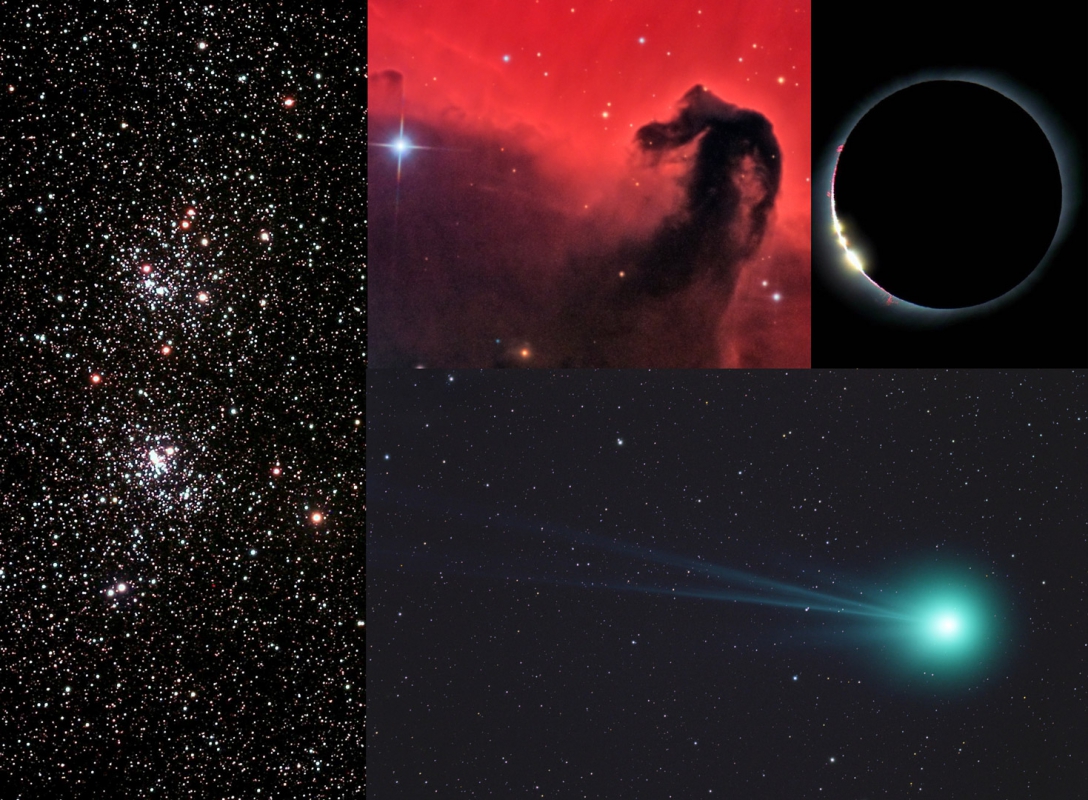
For the amateur astronomer, “diamond,” “ruby,” “emerald,” and “pearl” evoke poetic descriptions of eclipses, stars, clusters, comets, and nebulae. They are also the traditional gemstones for the anniversary years of 10 (diamond), 15 & 40 (both ruby), 20 (emerald), and 30 (pearl). With over 40-years of experience designing and building astronomical products —many in production for decades — we have a few “gems” of our own celebrating notable anniversaries this year. In this blog post, we take a look at current production products that are celebrating anniversaries. Among these products are five Sky & Telescope “Hot Product” awardees (those awards only started in 1998 🙂 ).
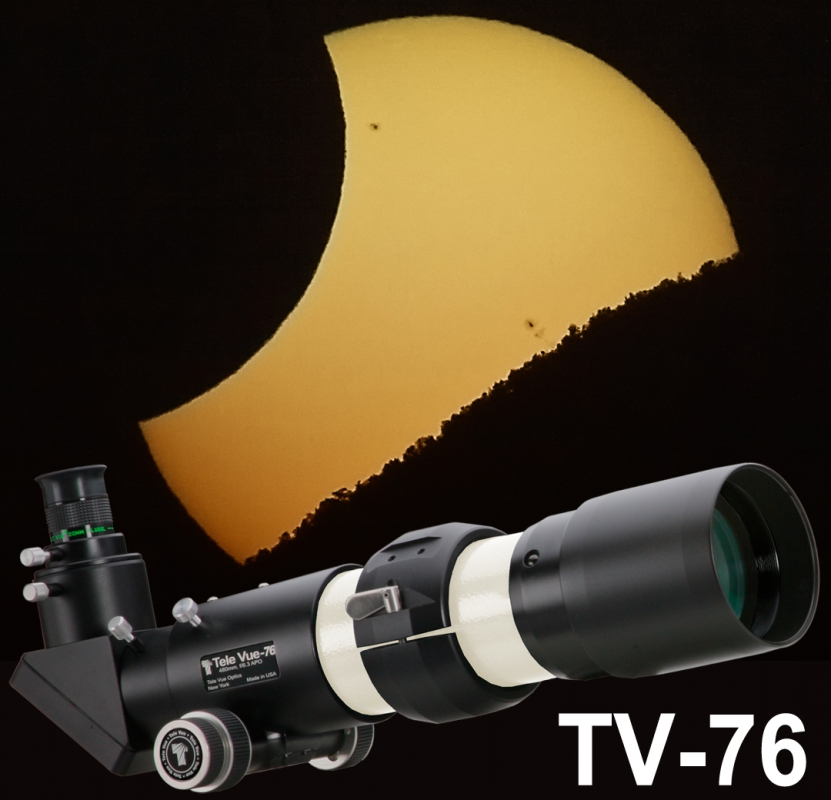
Telescope Anniversaries
The year 2021 is a big year for telescope anniversaries. The Tele Vue-76 (480mm,f/6.3) APO doublet refractor is celebrating its twentieth year of being a rich-field (5.5° with 55 Plössl or 41mm Panoptic), eclipse chasing, birding/spotting, compact imaging scope! This little powerhouse has not “stood still” over time: the current version has been upgraded to include a 10:1 dual-speed pinion assembly, dual drawtube tension knows, and dual end-ring lock knobs. The scope is available with either an ivory or green powder-coated tube.
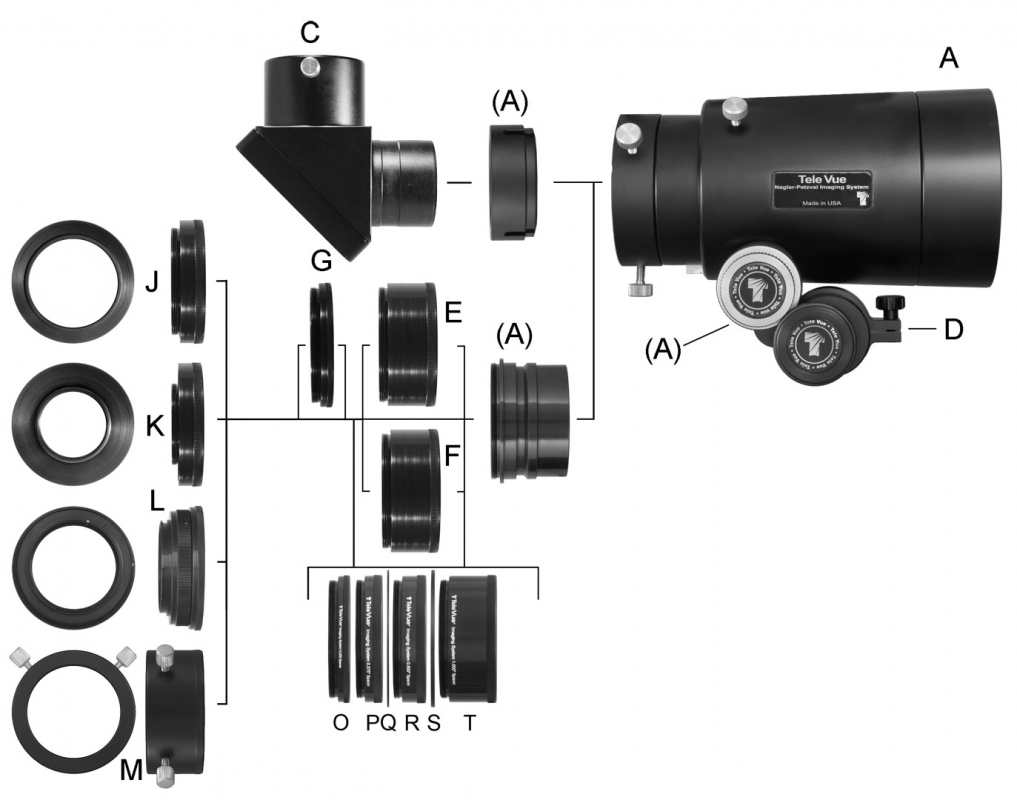
The Imaging System versions of our 4- and 5-inch Nagler-Petzval, 4-element, flat-field refractors, the Tele Vue-NP101is (540mm, f/5.4) and NP127is (660mm, f/5.2) were introduced 15-years ago. These “is” scopes were game changers: specifically designed for the rigors of digital imaging with large chips; yet they maintain their visual scope roots with added features for easier and more flexible imaging. “IS” scopes include a larger 2.4″ focuser to illuminate fields up to 52mm in diameter, the industry’s first tilt-compensating end ring, and 10:1 pinion assembly. The system also includes an array of adapters and spacers.
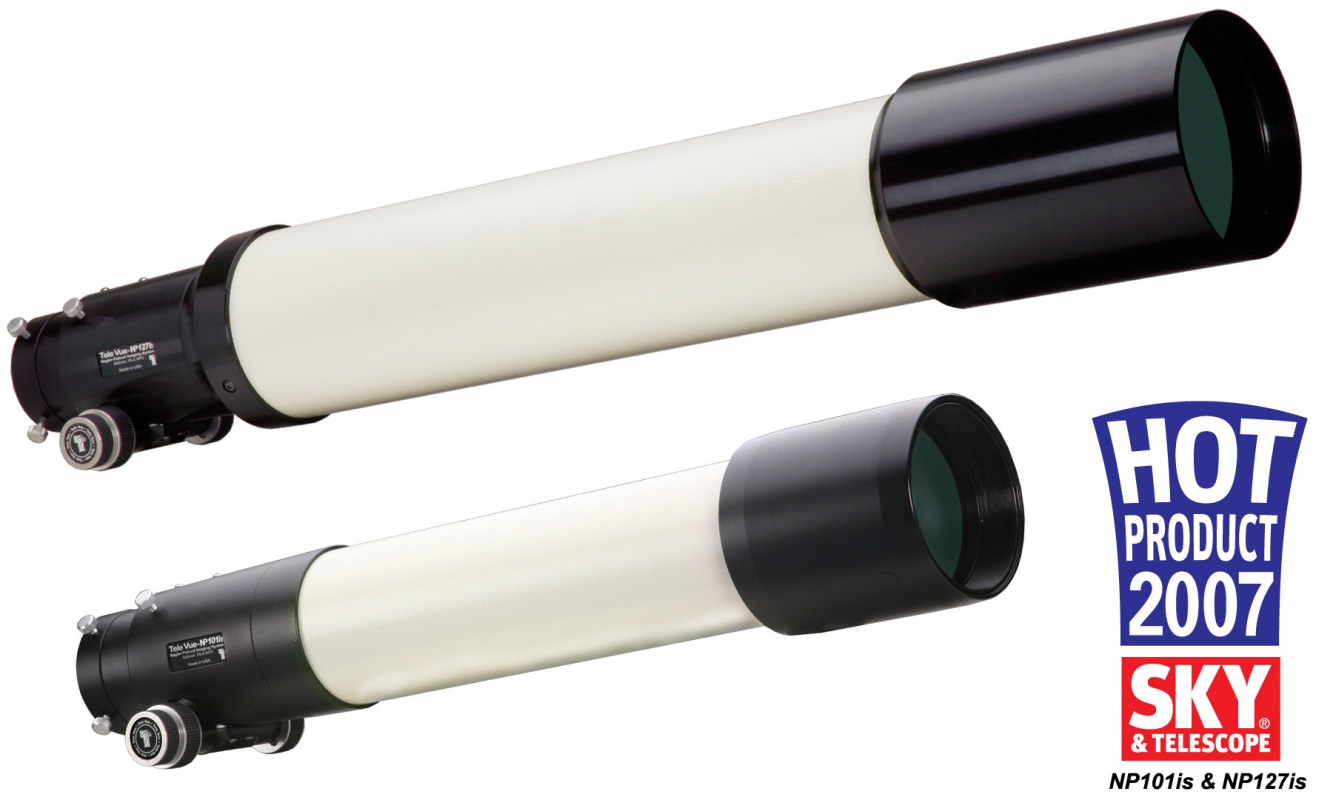

Eyepieces
There are two big 20-year anniversaries for the Nagler eyepiece line: the introduction of the Nagler Type 6 series and the Nagler Planetary Zoom. The Nagler Type 6 eyepieces were introduced in focal lengths of 13-, 9-, 7-, and 5mm and the zoom in 6-3mm — all of these instant classics are still in production!
Nagler Type-6 eyepieces are the shorter-focal lengths in the family of 82° Apparent Field of View Naglers. They all have 1¼” barrels, are parfocal, with similar compact size and weight, have 12mm eye-relief, and are terrific for bino-viewing.
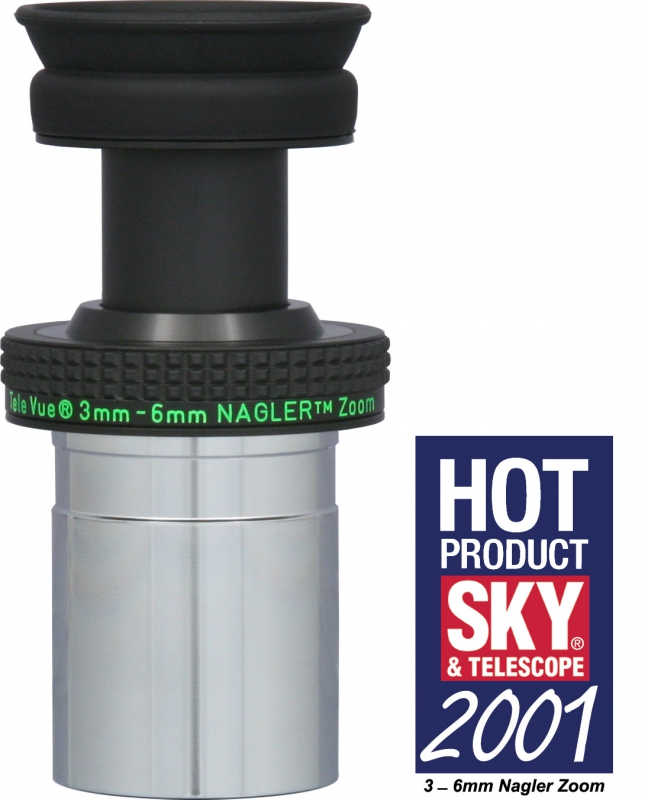
The Nagler Zoom was designed to answer the question of “what would make the ultimate Planetary eyepiece?” You see, we did not set out to design a zoom eyepiece per se, but rather a planetary eyepiece. Exquisite contrast and full-field sharpness are a given for a Tele Vue eyepiece design. So, what would make it the ultimate planetary eyepiece? As avid observers, it was obvious to us that the ability to deal with the ever-changing atmosphere to obtain the highest possible power would be a huge advantage. That meant zoom! In our minds, if the eyepiece must zoom, it must also be parfocal through the zoom range and have click-stops at discreet focal lengths. A parfocal, constant apparent field of view zoom with ultra-high contrast and full-field sharpness were qualities never combined before in an eyepiece. Though “Nagler” is associated with his 82° creations, Al attached the “Nagler” name to his 50° zoom design as a sign that its performance was well beyond traditional zoom eyepieces. 20-years on, it still stands unique in the field! It is the ultimate tool in the Tele Vue eyepiece arsenal for tweaking out the last bit of power that the atmosphere will permit.
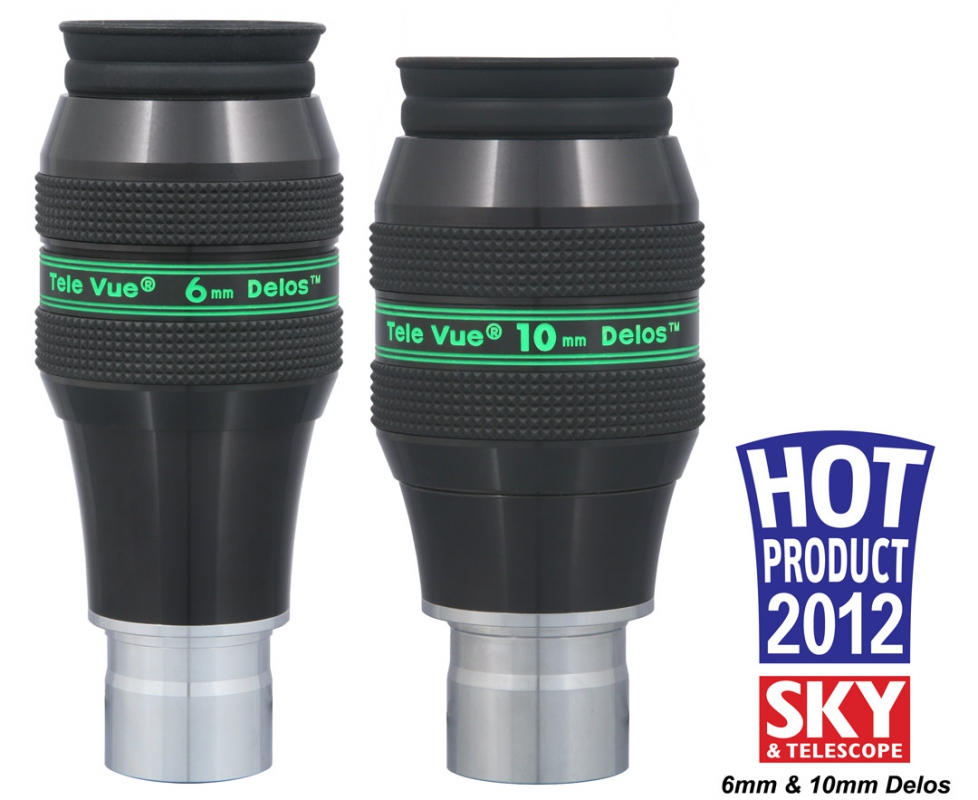
The Delos eyepiece line was introduced 10-years ago with two models: the 10- and 6mm. An evolution from the Ethos eyepiece line, this 72° apparent field, 1¼” series features long 20mm eye relief, sliding/locking eyeguards, as well as compatibility with Bino Vue, DIOPTRX®, and FoneMate accessories. From nebulae and clusters to planetary, reviews praised Delos. “It was the ‘distinctly pleasurable’ observing experience that most impressed our reviewer. When it comes to eyepiece design, The Delos seems to have hit all the sweet spots,” said the editors of Sky & Telescope.

Eyepiece Accessories
It was 40-years ago that we introduced our enhanced aluminum 2″ mirror diagonal. From the first one made, everyone has been machined from a solid block of aluminum for perfect alignment between the light source, mirror, and eyepiece. Since the barrels and body are a solid piece, you need not be concerned that the weight of a heavy eyepiece could cause the body to accidentally unscrew and possibly sending the eyepiece to the ground.
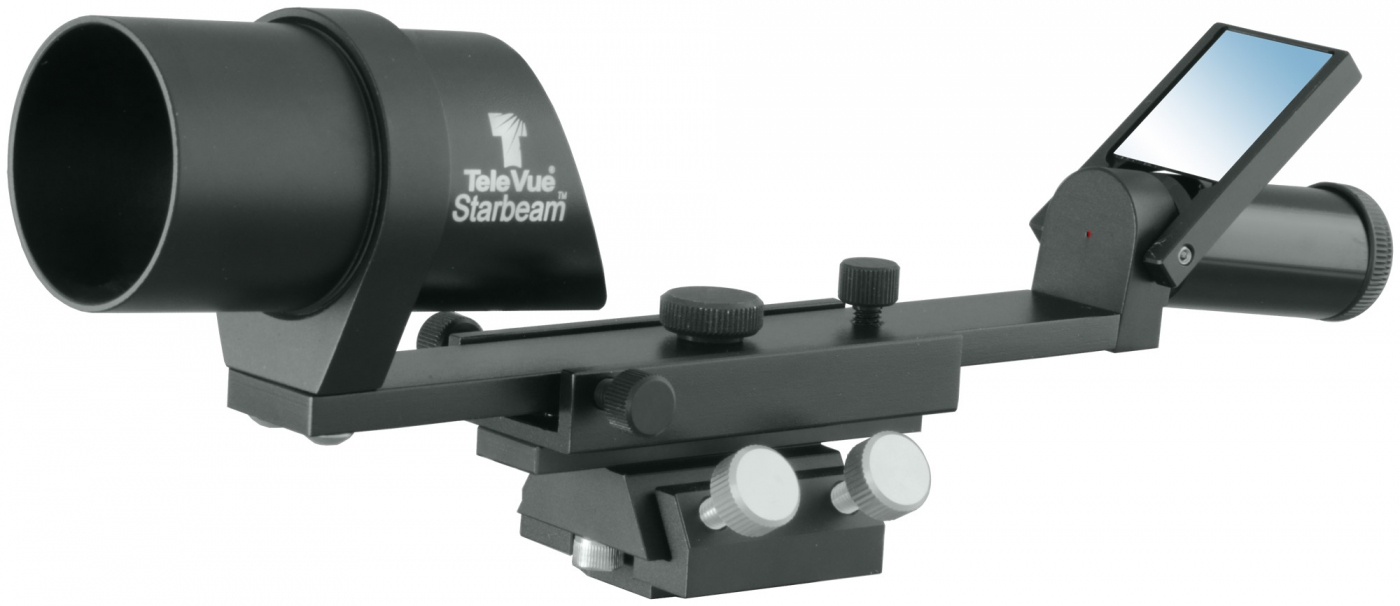
Sights and Finders
The Starbeam Unit Power Finder has two anniversaries this year: it debuted 30-years ago and was upgraded 20-years ago with the introduction of the flip-mirror. What other “red dot” allows observing from both behind and next to the scope — even when pointed toward the zenith? The dot is variable in brightness and blink rate and the elegant design allows optical alignment without tools. Versions exist for both Tele Vue scope rings and SCT scopes.
Al Nagler describes how the Starbeam was invented:
I came up with the Starbeam concept from my previous experience designing “heads-up” optics for military aircraft, and added the flip-mirror to solve the “neck-ache” issues for finding objects at high angles.
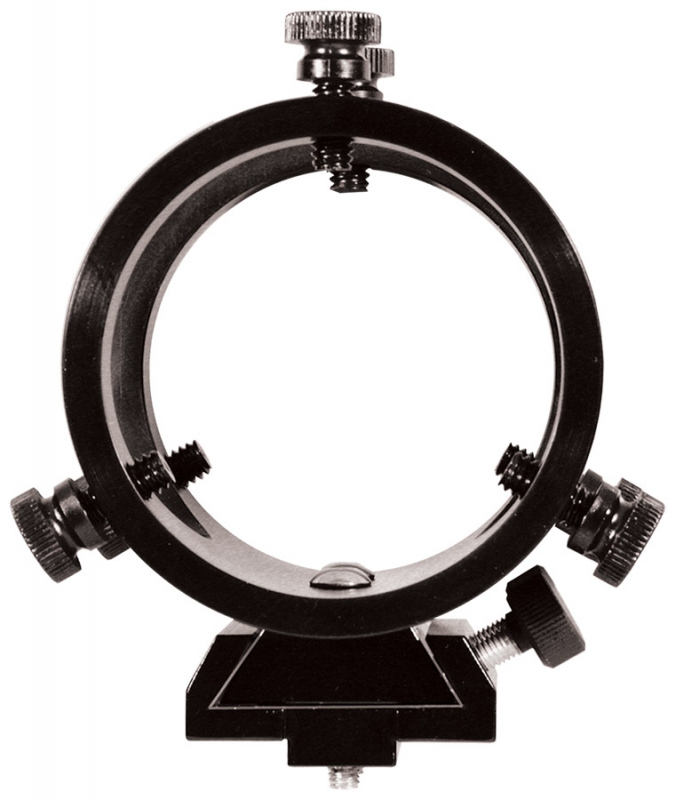
If you don’t have a lot of stars visible to the naked eye and want to mount a 50mm finder to your Tele Vue scope, our Universal Finder Mount has been a 20-year stalwart in Tele Vue’s lineup. With dual rings and six adjustable alignment screws, it is suitable for any 50mm finderscope. It was updated a few years after introduction to the current Quick Release Universal Finder Mount (QFM-1008) version. This features a Quick Release base that mounts onto Tele Vue ring slots.

Sol-Searcher has been the safe and easy way to find the Sun for 20-years. It is absolutely safe since you don’t look through Sol-Searcher, you look at it! After mounting on the scope, it is easily aligned by adjusting the front disk that contains the “pinhole” which projects an image of the Sun onto the ¼” translucent “screen.” This screen can be viewed from either side. Simply move your scope until the Sun’s image is centered on the screen and the Sun will be in the field of view of a low power eyepiece — simple as that! Mounts in the channels in Tele Vue tube rings or to any scope with Velcro.
The idea for the Sol-Searcher originated from a chat at the Winter Star Party in the Florida Keys, Al explains:
I was demonstrating solar viewing with one of our refractors at the Winter Star Party when Peter Hardy, the advertising manager at Sky and Telescope, asked me why I was using the telescope’s shadow on the ground to find the Sun? Couldn’t there be an easier way? It didn’t take me long to think of a concept like a “pinhole” camera viewing the image of the Sun on a little translucent “screen”. The Sol-Searcher (David came up with the name) was born.
Our first eyepiece designs, the Tele Vue Plössl and Nagler, were released in 1980. Four-decades and hundreds of products later, our product philosophy still rests on the foundation of solid ideas, designs, and manufacturing practices. That so many of our products remain popular for so long is a testament to their original vision and staying true to our nature. We hope you enjoy using our gear as much as we enjoy making it for you!
Did you observe, sketch, or image with Tele Vue gear? We’ll like your social media post on that if you tag it #televue and the gear used. Example:
#televue #tv85 #ethos #jupiter
Do you want your Tele Vue images re-posted on Tele Vue Optics’ Social Media accounts? Use this hashtag for consideration:




